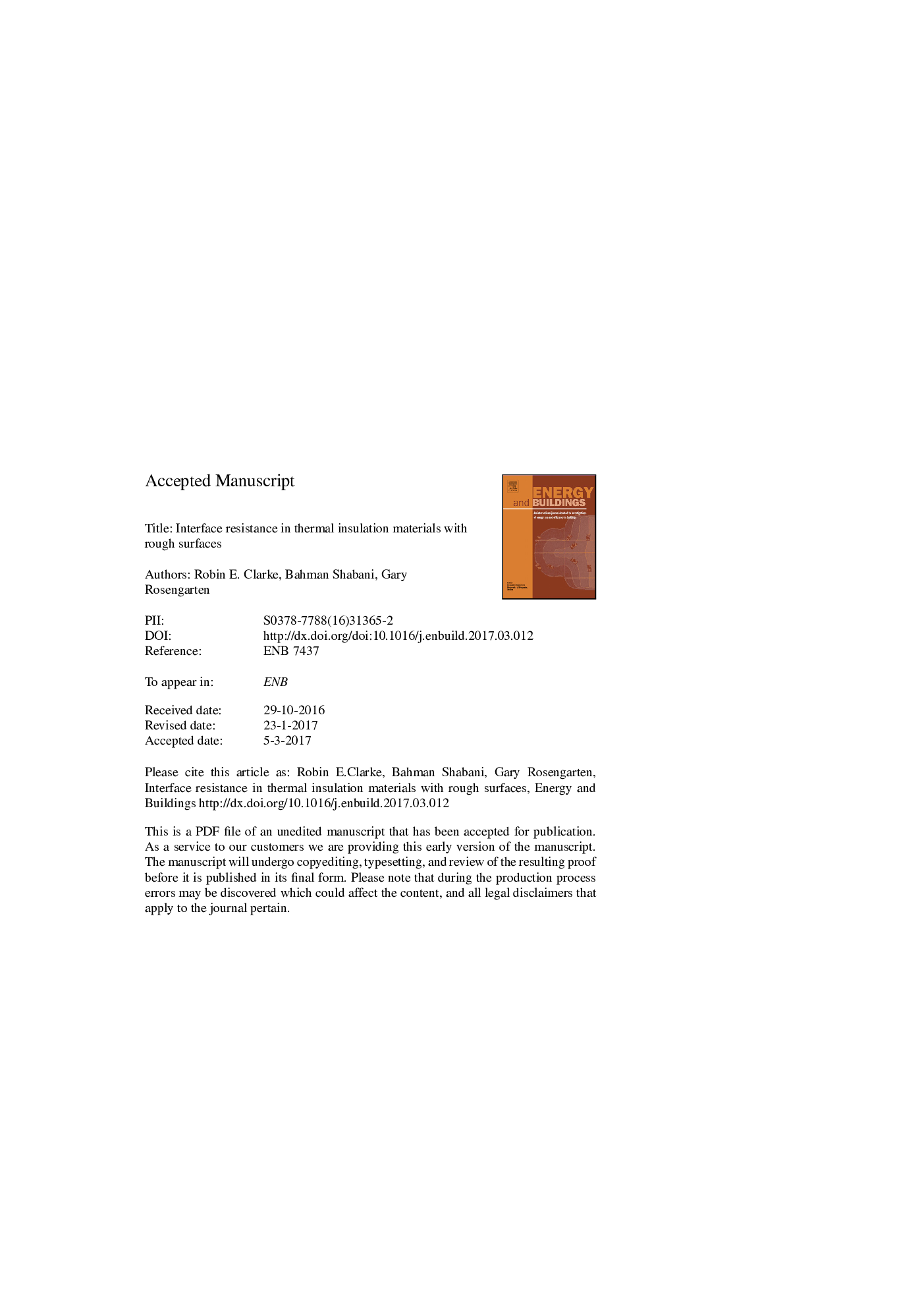| کد مقاله | کد نشریه | سال انتشار | مقاله انگلیسی | نسخه تمام متن |
|---|---|---|---|---|
| 4919197 | 1428946 | 2017 | 38 صفحه PDF | دانلود رایگان |
عنوان انگلیسی مقاله ISI
Interface resistance in thermal insulation materials with rough surfaces
ترجمه فارسی عنوان
مقاومت رابط در مواد عایق حرارتی با سطوح خشن
دانلود مقاله + سفارش ترجمه
دانلود مقاله ISI انگلیسی
رایگان برای ایرانیان
کلمات کلیدی
اندازه گیری مقاومت حرارتی، سطوح خشن، مقاومت رابط عایق حرارتی، متر جریان گرما،
موضوعات مرتبط
مهندسی و علوم پایه
مهندسی انرژی
انرژی های تجدید پذیر، توسعه پایدار و محیط زیست
چکیده انگلیسی
We have previously shown how errors due to interface resistance arising in the measurement of highly-conducting insulation materials may be minimized by the use of flexible buffer sheets at the plate interface. We have found however that for materials with very rough surfaces, such as some building boards, thermal resistance and test thickness are both measured to be higher when harder buffers are used. This paper reports on an experimental study of nine materials and four buffer types to better quantify these effects. Thermal resistance was higher by up to 0.01 m2 K/W and thickness by up to 0.5 mm using the hardest buffer relative to the softest. An analytical model has been developed, allowing measured roughness to be expressed as flat high and low areas of varying height and area fraction so that thermal resistance and height variations may be predicted as a function of roughness. These predictions have agreed reasonably well with optical roughness measurements. The model further predicts that interface-resistance errors are proportional to surface roughness and are always present with harder buffers, typically reaching 010 m2 K/W for a mean roughness amplitude (Sa) of 200 μm. However with softer buffers these errors are absent below an onset level, typically at an Sa value of 60 μm.
ناشر
Database: Elsevier - ScienceDirect (ساینس دایرکت)
Journal: Energy and Buildings - Volume 144, 1 June 2017, Pages 346-357
Journal: Energy and Buildings - Volume 144, 1 June 2017, Pages 346-357
نویسندگان
Robin E. Clarke, Bahman Shabani, Gary Rosengarten,
